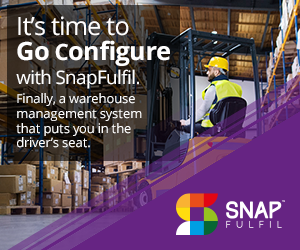The long-term costs of on-premise software
Choosing any kind of new business software is always a major endeavor from start to finish. There are a seemingly endless number of considerations to be made, all of them having their own benefits and drawbacks. These decisions are made even harder when businesses find themselves considering whether to either update existing systems or adopt a new software and strategy.
These are tough calls to make, but evidence shows they are getting easier. This is especially true in the supply chain industry, thanks to the proliferation of cloud-based software that makes switching easy and affordable. Many businesses don't realize how much their warehouse management system is hindering their growth, nor do they understand why cloud may be the best way forward.
The sunk cost fallacy
Cloud is a fairly new innovation in the enterprise software world, which explains why some industries have been slow to shift over to the model. However, many companies may be overestimating their inability to move from on-premise to something new. As is the case with many business applications, on-premise solutions like WMS may have been used for years or decades. This has inevitably led to a massive long-term investment in the software, one that many executives would be reluctant to simply give up on.
"The short-term fix often wins out over the long-term solution."
However, visualizing costs in the past doesn't move the business forward in a meaningful way. As Office Finance explained, this "sunk cost fallacy" is often found among business leaders who are debating between a software upgrade or a complete switch. The easy solution - continue using outdated, bloated on-premise software - too often wins out over the fix that's actually the most financially sound. While doing away with a legacy system may be painful in a way, the benefits realized by switching are usually extraordinary. In the long run, continuing to fall behind will cost far more than a transition to better functionality.
Getting locked in
A phenomenon related to sunk costs is the practice of becoming "locked in," as Richard Seroter of software news source InfoQ explained. Software lock-in can be a selling point or a hindrance, but in the case of on-premise solutions, it's typically the latter. As Seroter wrote, on-premise software's major costs aren't related to just the license. There are additional costs that can pile up as well, including:
- Additional licensing
- Long-term support agreements
- Onboarding and installation costs and related downtime
- Specialty hardware and upgrades
- Depreciation
 |
| With cloud capabilities, switching to new software isn't what it used to be. |
In the case of cloud solutions, however, lock-in may be preferable. With a reputable and innovative vendor leading the way, cloud solutions can remain on the cutting-edge of their specific functionality. They tend to work on a wide range of devices, and can be integrated quickly and affordably into almost any system. Even when switching from a legacy system, cloud's fast implementation time and reduced need for upfront capital expenses makes it a particularly advantageous option, especially in the fast-paced world of warehouse management.
Logistics leaders can't afford to get bogged down with the same old software. If you're still stuck with an outdated WMS, it may be well worth it to make the switch now.



